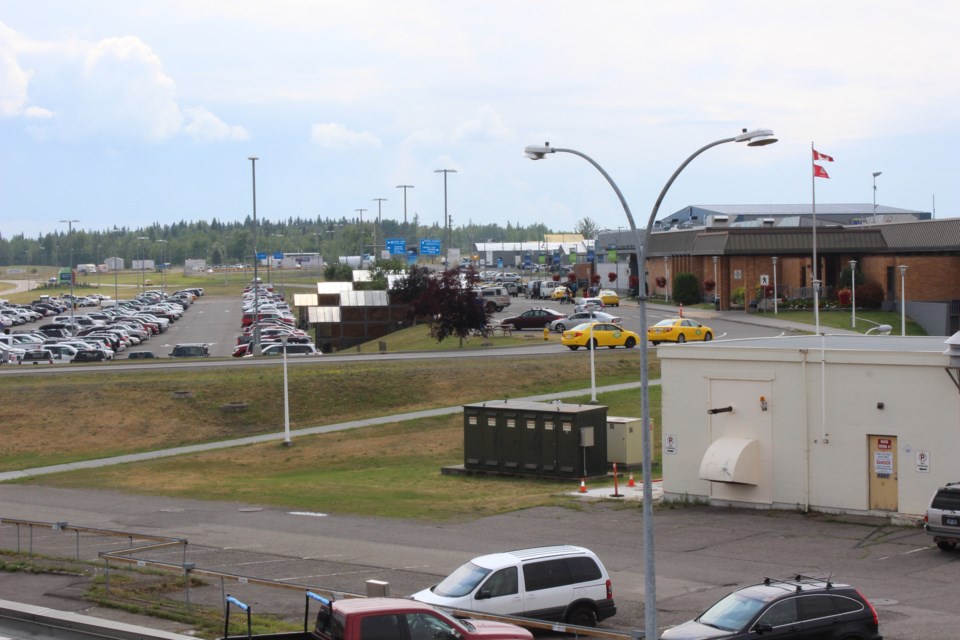Prince George’s airport continues to face challenges caused by the COVID-19 pandemic, and now has to lobby for the survival of its air traffic control tower.
Gordon Duke, CEO of the Prince George Airport Authority (PGAA), presented to city council last night (Dec. 21) regarding the state of YXS amid the ongoing pandemic.
“As we stated before the pandemic has had a brutal impact on the aviation industry and Prince George Airport is no different we have really been hurt.”
He echoed the Canadian Airports Council and Airports Council International's comments earlier this month that the industry is facing a $1.5-billion net loss and airports across the country have been advocating for increased federal supports.
“When we look at this long road to recovery a big concern is the amount of debts airports are going to have to take on for 2020 revenues,” said Duke, adding that the recovery period is going to be at least four to five years.
“When we look at our tasking it is to be ready for that recovery and for that we are going to need some help.”
Nav Canada, which is the organization that owns and operates Canada’s civil air navigation system, has also been impacted by the downturn in air traffic and financial impacts the aviation industry is facing.
Duke says early in the COVID-19 pandemic, Nav Canada accessed available government support and also announced a 29.5 per cent service charge increases for 2021.
However, in September, Nav Canada announced that they were going to be conducting aeronautical studies to assess “whether or not service is safe and efficient” with YXS among the airports listed for assessment.
“That is a little misleading. The study is designed to support reducing services in places, and initially, Prince George was not on the list, but we were added in on the second round,” explains Duke.
“There’s some fairly large airports involved in this and they are looking straight at the number of aircraft movements and we have remained consistent around the 40 to 45,000 movements. In their mind that isn’t big enough to support a control tower.”
Duke says YXS was designated as a National Service Airport based on a business plan that was submitted to Transport Canada with the vision it would be a global logistics hub.
“That’s why the runway was extended and various levels of government and PGAA contributed $66 million to get that runway extended and that’s why Boundary Road was built,” says Duke.
“We have also been designated a Foreign Trade Zone so in order for all of those things to come to fruition we need a control tower. The large aircraft operators are not going to schedule an airplane into an airport that doesn’t have a control tower.”
He says if Nav Canada decides to reduce service to YXS, the control tower would become a flight service station.
“In that case the tower is active but it just provides advice and does not control the airspace in any way,” says Duke. “It would be a shame after all the effort that has gone into building this airport to have it become stagnant because of this initiative.”
Mayor Lyn Hall and city staff have already written a letter in support of PGAA advocating for the need for the air traffic control tower to remain at YXS.
“I think I for one am really looking forward for us here at council and our staff working closely with you and your staff to aggressively lobby to maintain or air traffic control here in Prince George,” said Coun. Kyle Sampson.
“There’s been significant investment made not just from us here at the City of Prince George but from both other levels of government and that can’t be forgotten. We can’t let this attempt at change really stifle our progress so really thinking optimistically that we have a chance to stop this from going through as long as we work together.”
Coun. Cori Ramsay, who is the first vice-president with the North Central Local Government Association (NCLGA), said this is an issue affecting the entire region.
“It does impact all of the communities in the north, as mentioned, the airport here is a regional hub. I have received many comments from communities across the north about this already and we are here to support you and make sure any lobbying efforts that can be done will be done.”
Duke thanked council for its support, and said he believed PGAA is on the right path for highlighting the economic importance of the airport to the region.
“We want to make sure we are loud and diligent about bringing this matter to their attention,” said Duke.
“I do think we are on the right path particularly for this airport highlighting the economic impact and how this was part of the plan for this airport to be the hub of northern B.C.”





